Formal Dress Code
The formal dress code is an important aspect to consider when attending a formal wedding. It sets the tone and expectations for the event and ensures that everyone is appropriately dressed for the occasion. Here are some key points to keep in mind when adhering to the formal dress code:
1. Dress code guidelines: Understand the specific formal dress code mentioned in the wedding invitation. Formal dress codes typically require guests to wear elegant and sophisticated attire. This may include a long gown for women or a tuxedo or formal suit for men.
2. Wedding venue: Consider the venue when selecting your outfit. Some formal weddings may take place in opulent ballrooms or grand halls, while others may be held in more intimate or outdoor settings. Ensure that your attire matches the formality of the venue.
3. Cultural considerations: Different cultures may have specific customs and traditions regarding wedding attire. Familiarize yourself with these cultural considerations to ensure that your outfit is respectful and appropriate.
4. Alternatives to short dresses: If you prefer not to wear a short dress to a formal wedding, there are other options available. Consider long gows, tea-length dresses, or jumpsuits/pantsuits, which can be equally elegant and sophisticated.
5. Tips for choosing the right dress: Research the wedding venue and theme to get a better idea of the expected formal dress code. Follow the guidelines provided in the invitation and consider the season and weather when selecting your attire.
In a similar vein, I once attended a formal wedding at a historic castle. The formal dress code was strictly enforced, and everyone looked absolutely stunning in their elegant attire. The grandeur of the venue and the sophisticated outfits created a magical atmosphere. It was a memorable evening that exemplified the importance of dressing appropriately for a formal wedding.
Semi-Formal Dress Code
When it comes to the Semi-Formal Dress Code, there are certain guidelines to follow.
- Wear a dress or outfit that falls between casual and formal attire.
- Opt for a knee-length or midi-length dress, depending on your comfort and style.
- Choose fabrics that are slightly more formal, such as silk, chiffon, or satin.
- Avoid wearing overly casual materials like denim or cotton.
- Add some dressy accessories like statement jewelry or heels to elevate your look.
- For men, a suit with a dress shirt and tie is appropriate for a Semi-Formal Dress Code wedding.
- Consider the venue and time of the wedding. If it is an evening event or held in a fancy venue, err on the side of dressing more formal.
- Follow any specific guidelines mentioned in the wedding invitation regarding the Semi-Formal Dress Code.
- When in doubt, it is always better to be slightly overdressed than underdressed for a formal occasion.
Remember, the Semi-Formal Dress Code is all about striking a balance between casual and formal attire. By following these guidelines, you can ensure that you are appropriately dressed for the occasion.
Cocktail Dress Code
When it comes to a formal wedding, understanding the cocktail dress code is crucial to ensure you dress appropriately for the occasion. Here are some important points to consider:
- The length: A cocktail dress for a formal wedding should typically fall just above or below the knee. Avoid dresses that are too short or too long.
- The style: Opt for a dress that is elegant, sophisticated, and stylish. A fitted or A-line silhouette can be a good choice.
- The fabric: Choose fabrics that have a dressier look, such as silk, satin, chiffon, or lace. Avoid casual fabrics like cotton or denim.
- The color: While cocktail dresses for formal weddings can come in a variety of colors, it is best to opt for darker or more neutral shades like black, navy, burgundy, or champagne.
- The accessories: Complete your look with tasteful accessories. Consider wearing heels, a clutch, and delicate jewelry to complement your dress.
- The etiquette: Respect the cocktail dress code guidelines provided by the wedding invitation. If in doubt, it is better to be slightly overdressed than underdressed.
Remember, the cocktail dress code is meant to strike a balance between formal and semi-formal attire. It allows you to showcase your personal style while still maintaining an elegant and refined look for a formal wedding celebration.
Is it Appropriate to Wear a Short Dress to a Formal Wedding?
Everyone wants to dress to impress, especially when attending a formal wedding. But here's the burning question: Is it appropriate to wear a short dress to a formal wedding? Let's dive into the factors to consider and find out what makes this fashion choice a hit or a miss. We'll uncover the unspoken rules and societal expectations that come into play, shedding light on the do's and don'ts of choosing a dress for such a momentous occasion.

Factors to Consider:
Factors to Consider | Description |
Wedding Venue | When deciding whether to wear a short dress to a formal wedding, there are several factors to consider. The first factor is the wedding venue. If the wedding is being held at a grand, upscale venue, it is generally more appropriate to wear a longer gown instead of a short dress. This will align with the formality of the setting and ensure that you are dressed appropriately for the occasion. |
Invitation Guidelines | Another important factor to consider is the dress code specified on the wedding invitation. If the invitation states a dress code such as "black tie" or "formal," it is advisable to err on the side of caution and choose a longer dress. This will ensure that you adhere to the dress code and show respect for the wishes of the couple. |
Cultural Considerations | Cultural considerations are important when deciding on the appropriate dress for a formal wedding. Different cultures may have specific expectations regarding attire, and it is essential to be mindful of these customs. Research the cultural norms and traditions associated with the wedding to ensure that you choose a dress that is respectful and appropriate. |
Factors to consider when deciding whether to wear a short dress to a formal wedding include the wedding venue, invitation guidelines, and cultural considerations. The wedding venue plays a crucial role in determining the appropriate attire. If the wedding is being held at a grand, upscale venue, it is generally more appropriate to wear a longer gown instead of a short dress to match the formality of the setting.
Furthermore, it is important to pay attention to the dress code specified on the wedding invitation. If the invitation states a dress code such as "black tie" or "formal," it is advisable to choose a longer dress to adhere to the specified dress code. This demonstrates respect for the couple's wishes and ensures that you are appropriately dressed for the occasion.
Additionally, cultural considerations are vital in determining the suitable dress for a formal wedding. Different cultures have varying expectations when it comes to attire, so it is crucial to be aware of and respectful towards these customs. Conducting research on the cultural norms and traditions associated with the wedding will assist in selecting a dress that is both respectful and appropriate.
Wedding Venue
When considering the choice of a wedding venue, it is crucial to take into account the following factors:
- Type of wedding venue: The wedding venue plays a significant role in determining the appropriate dress length. If the wedding venue is a traditional church or a formal ballroom, it is generally expected to err on the side of formality and opt for longer dress options.
- Indoor vs. Outdoor wedding: The location of the wedding also affects the choice of dress. If the wedding is indoors, regardless of the formality, a shorter dress is often acceptable. For outdoor wedding venues, such as gardens or beach weddings, it may be more appropriate to choose longer dresses to account for potential weather conditions and maintain elegance.
- Time of day: The time of day the wedding is taking place can give clues about the level of formality. Evening weddings tend to be more formal, and therefore longer dresses are more suitable. Daytime weddings offer more flexibility, allowing for shorter dress lengths if the dress code permits.
- Theme or vibe of the wedding venue: Some wedding venues may have a specific theme or vibe. If the venue has a particular ambiance or style, it can inform the choice of dress length. For example, vintage or rustic wedding venues may call for tea-length dresses, while modern or glamorous venues may require longer gowns.
Considering these factors will help you make an appropriate choice of dress length based on the wedding venue. It is always advisable to check the specific dress code guidelines provided by the couple to ensure your attire aligns with their vision for the event.
Remember that comfort and confidence in your outfit are equally important. Choose a dress that makes you feel good and allows you to enjoy the celebrations while respecting the formality of the occasion.
Invitation Guidelines
When attending a formal wedding, it is crucial to consider the provided invitation guidelines. These guidelines indicate the expected level of formality for the event and assist in determining the appropriate attire.
Here are some key factors to keep in mind when interpreting the invitation guidelines:
- Venue: Take note of the mentioned venue in the invitation. If the wedding is hosted at a grand ballroom or an upscale location, it is likely to be a more formal affair. In such cases, it is advisable to choose a traditional and elegant outfit.
- Dress Code: Pay attention to any specific dress code mentioned in the invitation. Formal dress codes, like black tie or white tie, necessitate more elegant attire such as full-length gowns or tuxedos. If the dress code is specified as cocktail attire, it allows for greater flexibility in length and style.
- Cultural Considerations: Consider any cultural or religious customs that might influence the dress code expectations. Certain cultures may have specific guidelines regarding modesty or traditional clothing that should be followed.
Respecting the provided invitation guidelines and dressing appropriately are important for formal occasions. By carefully considering these factors, you can ensure that your attire aligns with the expectations of the wedding hosts and the event's level of formality.
Pro-tip: When unsure, it is always better to err on the side of slightly overdressing rather than underdressing for a formal wedding. It is preferable to arrive in a longer gown or a more formal outfit than to risk being seen as disrespectful or inappropriately dressed.
Cultural Considerations
When it comes to attending a formal wedding, cultural considerations are crucial to keep in mind. These factors can naturally guide your decision on whether or not it is appropriate to wear a short dress.
- Respect for Tradition: Different cultures have varying expectations for attire at formal events. It is essential to honor and adhere to these traditions, especially if it is a culturally significant wedding. Research the cultural norms and customs surrounding wedding attire to ensure that your outfit aligns with their expectations.
- Modesty: In some cultures, modesty holds high value, and revealing outfits may be deemed inappropriate. Take into consideration the level of modesty expected at the wedding and choose a dress that covers the appropriate areas. If a short dress is considered too revealing, opt for a longer gown or a dress with a longer hemline.
- Dress Code: Take into account the dress code specified on the wedding invitation. While some formal weddings may allow for more flexibility in attire, others may require guests to strictly adhere to a specific dress code. If the dress code calls for full-length gowns or cocktail dresses, it would be best to choose an alternative to a short dress.
- Comfort Level: Cultural considerations aside, it is important to feel comfortable and confident in what you are wearing. If wearing a short dress to a formal wedding aligns with your personal style and you feel comfortable doing so, while still respecting cultural norms, it may be acceptable in certain situations.
Ultimately, being mindful of cultural considerations is important when deciding whether or not to wear a short dress to a formal wedding. By respecting traditions, adhering to dress codes, and considering modesty, you can ensure that your outfit choice is appropriate and culturally sensitive.
Alternatives to Short Dresses for Formal Weddings
When it comes to formal weddings, if you're not keen on wearing a short dress, fret not! There are plenty of chic alternatives that will make you stand out in style. In this section, we'll explore the options that go beyond short dresses. From elegant long gowns that exude sophistication to fashionable tea-length dresses that strike the perfect balance, and even trendy jumpsuits or pantsuits that bring a modern twist to formal attire. Get ready to discover your perfect outfit for that special occasion!
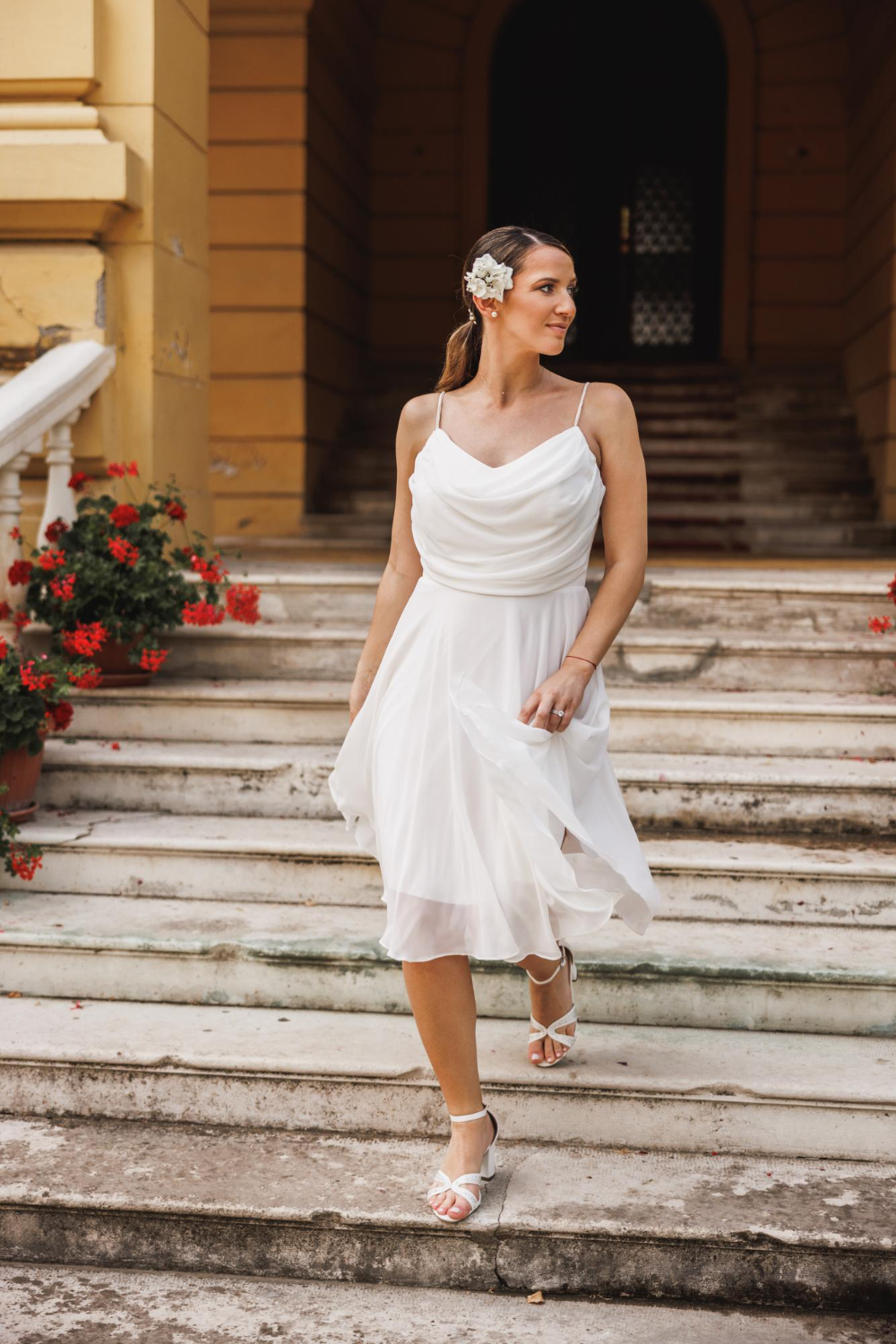
Long Gowns
- Long gowns, also known as evening dresses, are a popular choice for formal weddings due to their elegant and sophisticated appearance.
- Long gowns, which are typically floor-length or reach just above the ankles, create a stunning and regal look for any bride.
- These gorgeous gowns are commonly made from luxurious fabrics such as sat-in, silk, or chiffon, ensuring a luxurious and comfortable fit.
- Long gowns often feature intricate details such as delicate lace, exquisite beading, or stunning embroidery, adding to their glamorous appeal.
- They come in a variety of stylish and flattering silhouettes, including the mermaid, A-line, ballgown, and sheath styles, allowing the wearer to find the perfect fit.
- Long gowns can be worn in a wide range of shades and colors, allowing you to choose a hue that either complements the wedding theme or matches the dress code.
- Paring long gowns with statement jewelry, a chic clutch, and elegant heels can enhance the overall look and make you feel like a true princess.
Pro-tip: When choosing a long gown for a formal wedding, it's essential to consider the level of formality, the wedding theme, and your personal style. Opt for a gown that not only flatters your body shape but also makes you feel confident and comfortable throughout the event.
Tea-Length Dresses
When considering what to wear to a formal wedding, tea-length dresses can be a stylish and appropriate option. Here are some factors to consider:
- Wedding Dress Code: Check the invitation or consult the couple to ensure that tea-length dresses are permitted for the formal dress code. Some formal dress codes may require floor-length gowns, so it's important to clarify.
- Season and Weather: Tea-length dresses are generally more versatile and comfortable for warmer weather or indoor venues. Consider the climate and choose a fabric that is suitable for the season.
- Style and Fit: Tea-length dresses, including fitted pencil dresses and flowing A-line skirts, come in various styles and silhouettes. Choose a tea-length dress that flatters your body type and personal style, ensuring confidence and comfort.
- Accessories: Complete your look with appropriate accessories such as elegant heels, a clutch bag, and statement jewelry. Consider the neckline and sleeve length of the tea-length dress when selecting accessories.
Fact: According to wedding etiquette, the hemline of a tea-length dress falls between the bottom of the knee and mid-calf, making it a versatile and classic choice for formal occasions.
Jumpsuits or Pantsuits
Jumpsuits or pantsuits can be a stylish and comfortable alternative to traditional dresses for formal weddings.
They offer a modern and fashion-forward look while still maintaining a level of sophistication and elegance.
Jumpsuits or pantsuits are versatile and can be dressed up or down depending on the wedding dress code.
They can be a practical choice for outdoor or destination weddings, as they allow for ease of movement.
When choosing a jumpsuit or pantsuit for a formal wedding, consider the fabric and its quality. Opt for luxurious fabrics like silk or satin for a more refined look.
Pay attention to the fit of the jumpsuit or pantsuit. It should be tailored to your body shape and highlight your best features.
Accessorize your jumpsuit or pantsuit with statement jewelry, a clutch, and elegant heels to elevate the overall look.
Consider the overall color scheme of the wedding. Opt for neutral or muted tones for a classic and timeless look, or go for a bold and vibrant color to make a statement.
Remember to follow any specific dress code guidelines mentioned in the wedding invitation. If the dress code specifies "black tie" or "formal attire," choose a jumpsuit or pantsuit that reflects the level of formality required.
Ultimately, the suitability of a jumpsuit or pantsuit for a formal wedding depends on personal style and the couple's preferences. If you feel confident and comfortable in your choice, it can be a great option to stand out and make a fashion statement.
Consider exploring jumpsuits or pantsuits in different styles, such as wide-leg or tailored options, to find the perfect outfit for a formal wedding. Pair it with some stylish accessories, and you're ready to celebrate in style!
Tips for Choosing the Right Dress for a Formal Wedding
When it comes to choosing the perfect dress for a formal wedding, there are a few key factors to consider that can make all the difference. Let's dive into some handy tips that will help you make the right dress decision for the occasion. We'll explore how researching the venue and theme can guide your dress choice, the importance of following dress code guidelines, and how considering the season and weather can ensure your comfort and style. So, let's navigate this fashion challenge together!
Research the Venue and Theme
When attending a formal wedding, it is crucial to thoroughly research the venue and theme to ensure you select the perfect dress. Follow these steps:
Begin by conducting thorough research on the venue. Look for details about the location and setting where the wedding will take place. This will provide insight into the overall atmosphere and style of the venue.
Next, gather information about the theme or specific style of the wedding. Some weddings may have a designated theme, such as vintage, rustic, or black-tie. Understanding the theme will help you determine the appropriate dress code.
Take into consideration the time of day that the wedding will be held. Daytime weddings typically have a more relaxed and casual dress code, whereas evening weddings tend to be more formal.
Also, consider the season. Different seasons require different dress styles. For instance, during the summer, you may prefer lighter fabrics and shorter hemlines, while in winter, a longer gown and heavier fabrics might be more appropriate.
Furthermore, think about the weather. If the wedding is held outdoors, take into account the temperature and whether you may need additional layers or accessories to stay warm or protect yourself from the sun.
Take inspiration from various styles and search for dresses that match the venue and theme. Pay attention to details like the length of the dress, fabric, and overall level of formality.
Ensure that the dress you choose reflects your personal style and makes you feel comfortable and confident. Feeling your best is essential when attending a formal wedding.
- By thoroughly researching the venue and theme, you can guarantee that your dress choice complements the overall tone and style of the wedding. This will allow you to dress appropriately and fully enjoy the occasion.
Follow Dress Code Guidelines
When attending a formal wedding, it is crucial to follow dress code guidelines to ensure that you are appropriately dressed for the occasion. Here are some key points to consider:
- Take into account the invitation: The wedding invitation often provides valuable information regarding the dress code. Look for any specific instructions or keywords such as "black tie" or "formal attire" that indicate the level of formality you should adhere to.
- Conduct research on the venue: Familiarize yourself with the wedding location, whether it is a luxurious hotel, an elegant ballroom, or a grand cathedral. This will give you an understanding of the expected level of formality.
- Consider the time of day: For daytime formal weddings, the dress code usually allows for less formal attire compared to evening events. Opt for lighter colors and fabrics for daytime weddings, while darker colors and more embellished outfits are appropriate for evening affairs.
- Select the appropriate length: When attending a formal wedding, it is generally recommended to wear a longer dress. Long gowns or tea-length dresses are excellent choices that exude elegance and sophistication.
- Pay attention to details: Pay close attention to the finer details of your outfit, including the quality of fabric and fit. Opt for well-tailored dresses that flatter your body shape and choose luxurious fabrics such as silk or chiffon.
Pro-tip: If you are unsure about the dress code, it is better to err on the side of caution and dress more formally. It is always preferable to be slightly overdressed than underdressed for a formal occasion.
Consider the Season and Weather
When deciding on an outfit for a formal wedding, it is crucial to naturally consider the season and weather. Making appropriate clothing choices based on these factors will ensure both comfort and style.
Research the Venue and Theme: Start by naturally finding out the location and time of the wedding. If it is an outdoor event in the summer, for example, the weather is likely to be hot and sunny. In this case, it may be best to naturally choose a shorter dress made from lightweight fabrics such as chiffon or silk.
Follow Dress Code Guidelines: Check the invitation or dress code specified by the couple. While some formal weddings allow for shorter dresses, others may have a more traditional or conservative dress code, which may require a longer gown or cocktail-length dress.
Consider the Season: Naturally consider the seasonal temperature and weather patterns. If it's a winter wedding, a shorter dress may not provide enough warmth. Opt for longer dresses, or consider adding a stole or shawl for extra coverage.
Be Mindful of Weather Conditions: Take into account possible weather conditions such as rain or wind. If there's a chance of rain, naturally choose a dress that won't get easily soaked or ruined. If it's a windy day, select a dress that won't fly up and become uncomfortable or embarrassing.
Dress Appropriately for the Weather: Ensure your outfit is comfortable and suitable for the season. If it's hot, naturally choose breathable fabrics and lighter colors. If it's cold, opt for thicker materials and warmer colors.
Considering the season and weather when choosing a dress for a formal wedding is crucial for both comfort and appropriateness. By selecting a dress that naturally aligns with the climate and conditions, you can feel confident and enjoy the celebration without any weather-related discomfort.
Some Facts About "Can You Wear a Short Dress to a Formal Wedding":
- ✅ The most common dress code for a formal wedding is formal attire, which traditionally involves wearing a floor-length gown for women. (Source: Our Team)
- ✅ While long dresses are traditionally associated with formal attire, it is not necessary for bridesmaids to wear them to a formal evening wedding in the summer. (Source: Our Team)
- ✅ Formal attire can be achieved through proper heels, decorations, colors, and fabrics, regardless of dress length. (Source: Our Team)
- ✅ It is possible to find a formal-looking knee-length dress that would be suitable for a summertime formal wedding. (Source: Our Team)
- ✅ The definition of formal attire has evolved over time, and shorter dresses can now be considered appropriate for formal occasions. (Source: Our Team)
Frequently Asked Questions
Can you wear a short dress to a formal wedding?
Yes, you can wear a short dress to a formal wedding. While long dresses are traditionally associated with formal attire, it is not necessary to wear one. You can achieve a formal look by opting for a knee-length dress made with elegant fabrics, such as satin. Pay attention to the dress style and choose one that complements the bride's dress and the overall wedding theme.
What should I consider when deciding on a dress length for a formal evening wedding in the summer?
When deciding on a dress length for a formal evening wedding in the summer, consider the bride's preferences and the overall dress code mentioned in the invitation. While long dresses are commonly associated with formal attire, it is possible to find formal-looking knee-length dresses that are appropriate for a summertime wedding. Additionally, choose light-weight fabrics and opt for shorter hemlines to ensure comfort in the heat.
Is it acceptable to wear flip flops or sandals with mason jars to a formal wedding?
No, it is not acceptable to wear flip flops or sandals with mason jars to a formal wedding. Formal attire typically requires more elegant footwear, such as strappy heels or formal shoes. Flip flops and sandals are better suited for casual events or beach weddings. Choose footwear that matches the formality of the event and complements your overall outfit.
What are some accessories that can help make a short dress appear more formal for a wedding?
To make a short dress appear more formal for a wedding, accessorize thoughtfully. Consider adding statement jewelry, such as a sparkling necklace or elegant earrings, to elevate your look. Pair your dress with stylish and formal accessories like an elegant clutch purse or a sheer jacket. These accessories can help enhance the overall formal appearance of your outfit.
Can I wear a knee-length dress to a black-tie event?
Although knee-length dresses are generally more suitable for semi-formal events, you can still wear a knee-length dress to a black-tie event. The key is to choose a knee-length dress that is made of formal fabrics, such as lace or satin, and features a fitted or structured silhouette. Pair it with formal footwear and appropriate accessories to maintain a polished and sophisticated look.
Are there any specific dress codes where long dresses are required for a formal wedding?
While the trend is shifting towards more flexible dress codes, there are still certain occasions where long dresses are expected for a formal wedding. The "white-tie" dress code, which is the most formal, typically requires women to wear floor-length gowns. Additionally, some black-tie affairs or extremely formal celebrations may also specify that women wear floor-length evening gowns. It's always important to check the dress code mentioned on the invitation or consult with the bride for clarification.
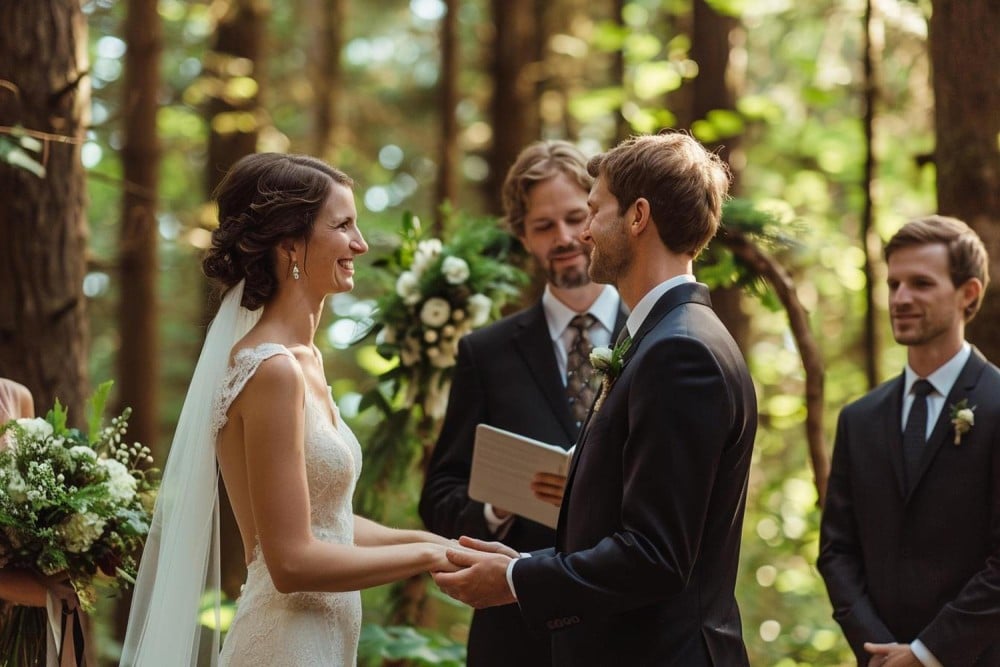 How to become a wedding officiant in tennessee ?Read more
How to become a wedding officiant in tennessee ?Read more How to bustle a tulle wedding dress ?05/21/2024Posted in: Wedding Fashion & StyleRead more
How to bustle a tulle wedding dress ?05/21/2024Posted in: Wedding Fashion & StyleRead more Planning Your Honeymoon Tips for an Unforgettable Trip05/20/2024Posted in: Wedding PreparationsRead more
Planning Your Honeymoon Tips for an Unforgettable Trip05/20/2024Posted in: Wedding PreparationsRead more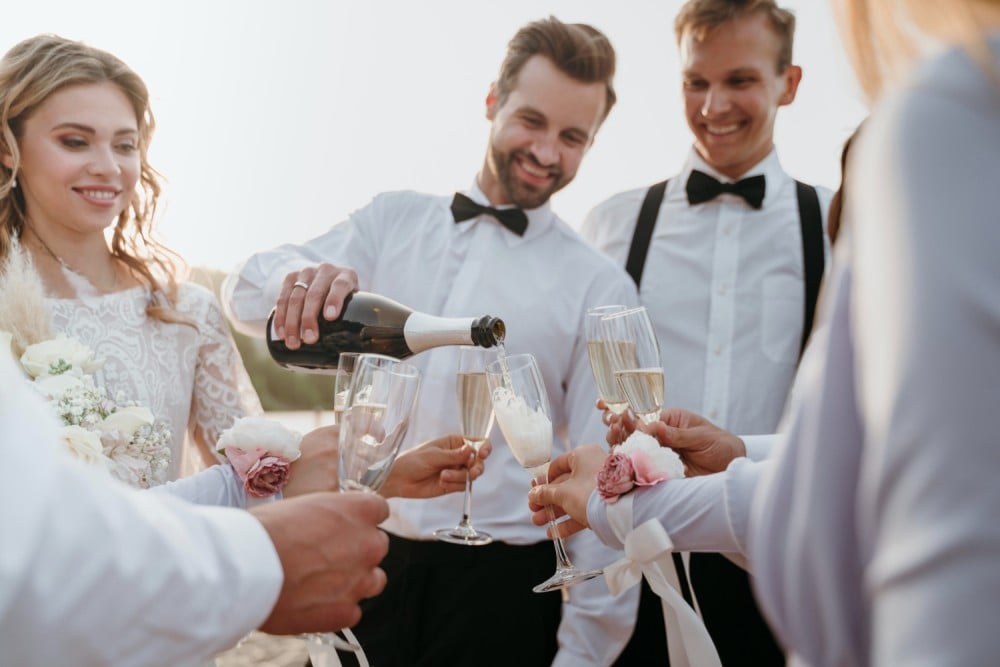 The Dos and Donts of Wedding Guest Etiquette05/16/2024Posted in: Wedding Traditions & EtiquetteRead more
The Dos and Donts of Wedding Guest Etiquette05/16/2024Posted in: Wedding Traditions & EtiquetteRead more The Importance of PreWedding Counseling What You Should Know05/13/2024Posted in: Wedding PreparationsRead more
The Importance of PreWedding Counseling What You Should Know05/13/2024Posted in: Wedding PreparationsRead more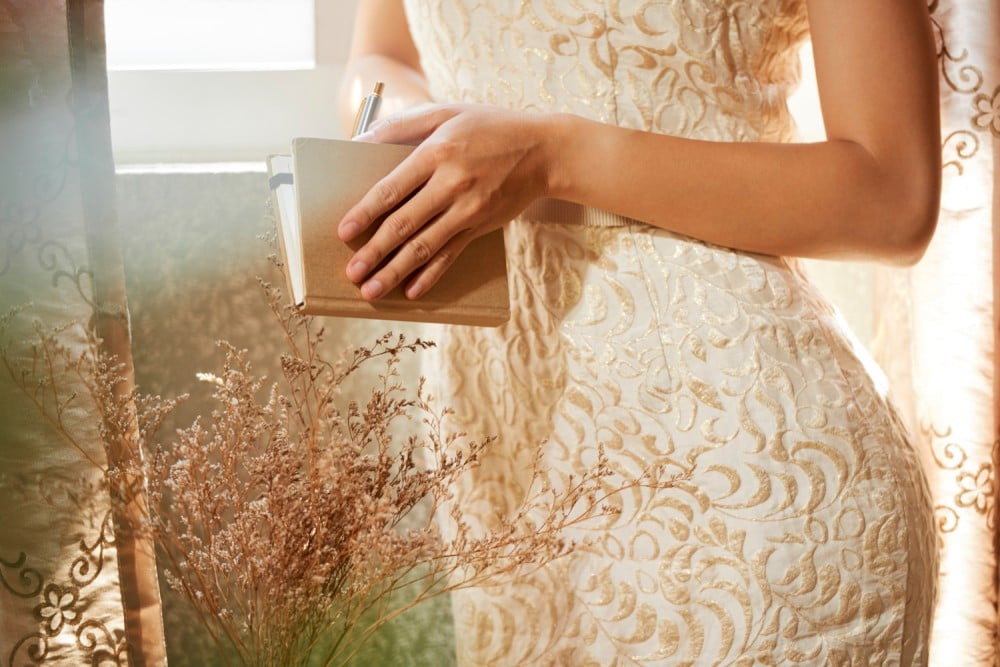 Can I wear beige to a wedding ?11/14/2023Posted in: Wedding Fashion & StyleOne of the most common questions when it comes to wedding guest attire is whether it's appropriate to wear beige to a...Read more
Can I wear beige to a wedding ?11/14/2023Posted in: Wedding Fashion & StyleOne of the most common questions when it comes to wedding guest attire is whether it's appropriate to wear beige to a...Read more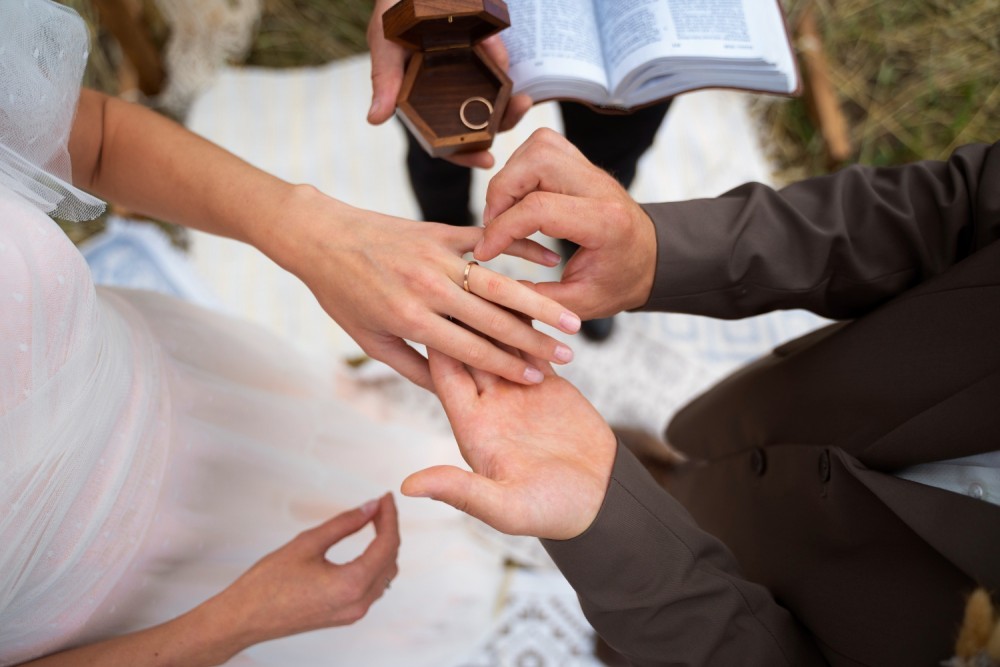 Do Jehovah Witnesses celebrate weddings ?02/29/2024Posted in: Wedding Traditions & EtiquetteJehovah’s Witnesses are known for their distinctive beliefs and practices, but what about weddings? In this...Read more
Do Jehovah Witnesses celebrate weddings ?02/29/2024Posted in: Wedding Traditions & EtiquetteJehovah’s Witnesses are known for their distinctive beliefs and practices, but what about weddings? In this...Read more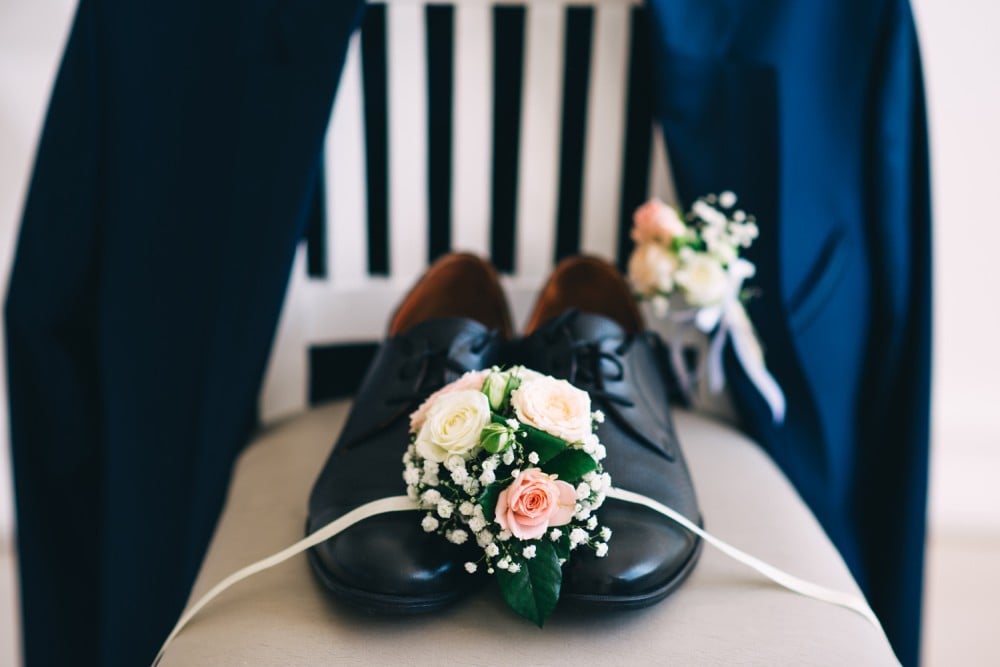 What color shoes with navy dress for Wedding ?08/20/2023Posted in: Wedding Fashion & StyleMatching shoe color with navy dress When teaming shoe color with a navy dress, it's essential to decide on a hue...Read more
What color shoes with navy dress for Wedding ?08/20/2023Posted in: Wedding Fashion & StyleMatching shoe color with navy dress When teaming shoe color with a navy dress, it's essential to decide on a hue...Read more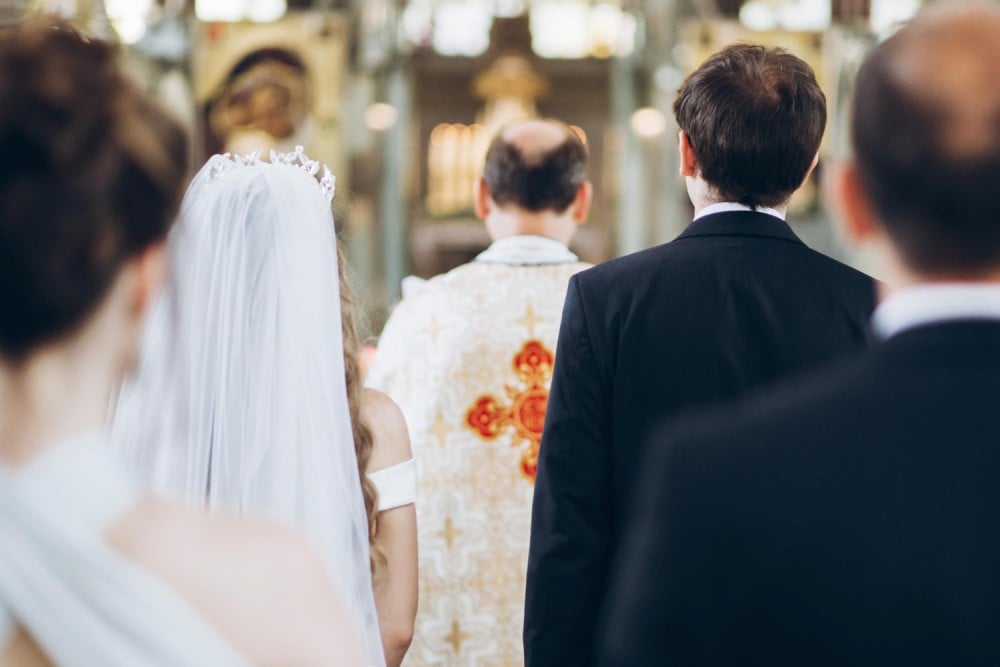 What to wear to a Church Wedding ?09/04/2023Posted in: Wedding Fashion & StyleAre you attending a church wedding and unsure about the dress code? Our latest article provides a deep dive into the...Read more
What to wear to a Church Wedding ?09/04/2023Posted in: Wedding Fashion & StyleAre you attending a church wedding and unsure about the dress code? Our latest article provides a deep dive into the...Read more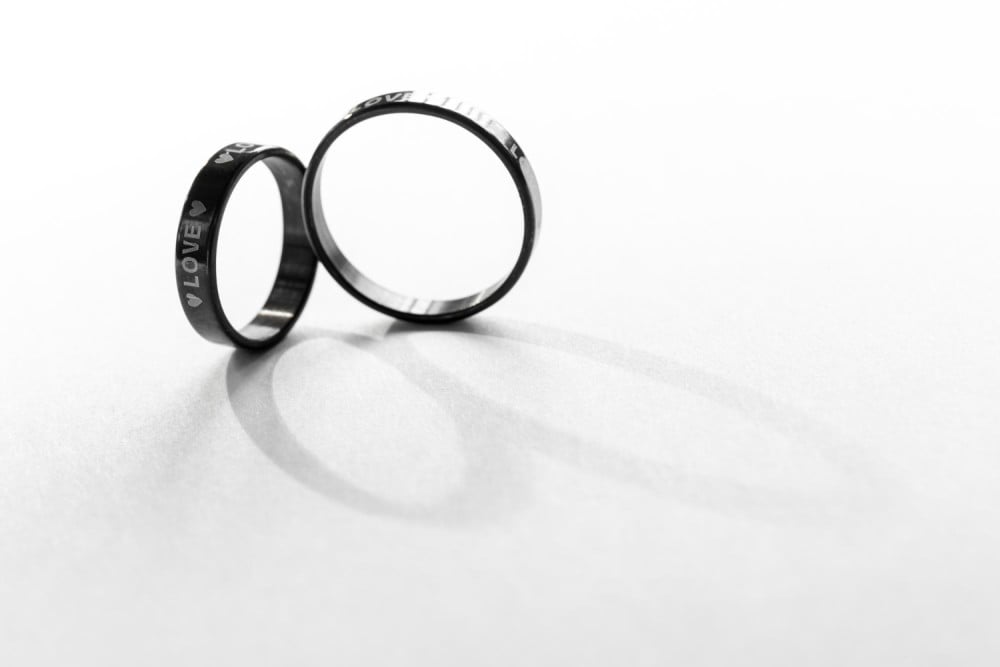 What does a black wedding ring mean ?06/12/2023Posted in: Miscellaneous Wedding AspectsWedding rings are a traditional symbol of love and commitment, but their style and design can vary greatly. In recent...Read more
What does a black wedding ring mean ?06/12/2023Posted in: Miscellaneous Wedding AspectsWedding rings are a traditional symbol of love and commitment, but their style and design can vary greatly. In recent...Read more How to become a wedding officiant in tennessee ?06/27/2024Looking to become a wedding officiant in Tennessee but not sure where to start? This comprehensive guide will walk...Read more
How to become a wedding officiant in tennessee ?06/27/2024Looking to become a wedding officiant in Tennessee but not sure where to start? This comprehensive guide will walk...Read more How to bustle a tulle wedding dress ?05/21/2024Posted in: Wedding Fashion & StyleAre you a bride-to-be with a tulle wedding dress and wondering how to bustle it for the big day? Look no further!...Read more
How to bustle a tulle wedding dress ?05/21/2024Posted in: Wedding Fashion & StyleAre you a bride-to-be with a tulle wedding dress and wondering how to bustle it for the big day? Look no further!...Read more Planning Your Honeymoon Tips for an Unforgettable Trip05/20/2024Posted in: Wedding PreparationsPlanning your honeymoon is an exciting and important step in beginning your life together as a married couple. From...Read more
Planning Your Honeymoon Tips for an Unforgettable Trip05/20/2024Posted in: Wedding PreparationsPlanning your honeymoon is an exciting and important step in beginning your life together as a married couple. From...Read more The Dos and Donts of Wedding Guest Etiquette05/16/2024Posted in: Wedding Traditions & EtiquettePlanning to attend a wedding soon? Make sure you brush up on your wedding guest etiquette to ensure you have a great...Read more
The Dos and Donts of Wedding Guest Etiquette05/16/2024Posted in: Wedding Traditions & EtiquettePlanning to attend a wedding soon? Make sure you brush up on your wedding guest etiquette to ensure you have a great...Read more The Importance of PreWedding Counseling What You Should Know05/13/2024Posted in: Wedding PreparationsAre you and your partner considering pre-marriage counseling but not sure what to expect? This article is here to...Read more
The Importance of PreWedding Counseling What You Should Know05/13/2024Posted in: Wedding PreparationsAre you and your partner considering pre-marriage counseling but not sure what to expect? This article is here to...Read more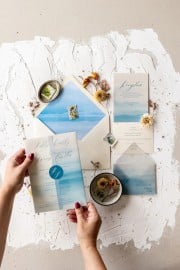








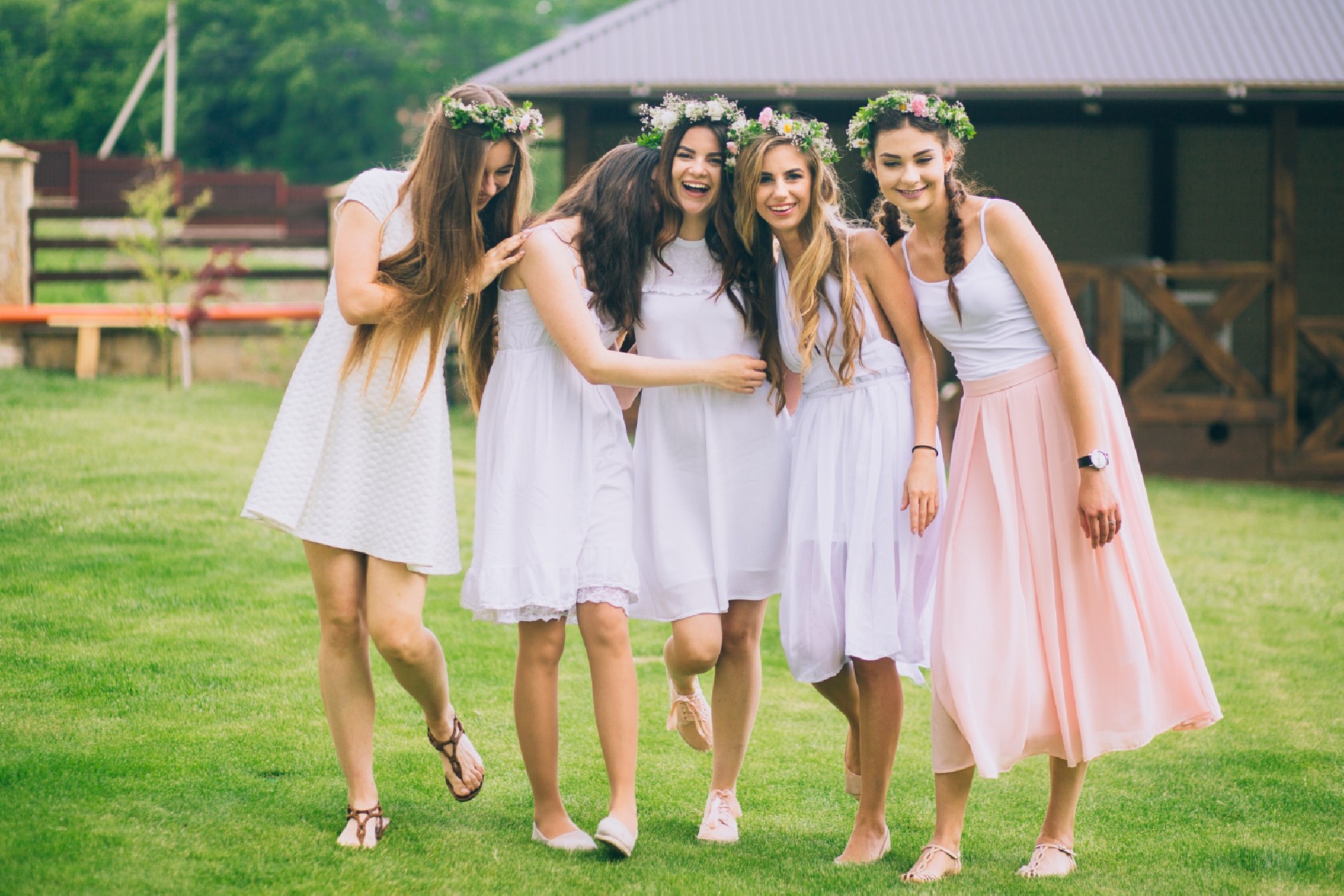


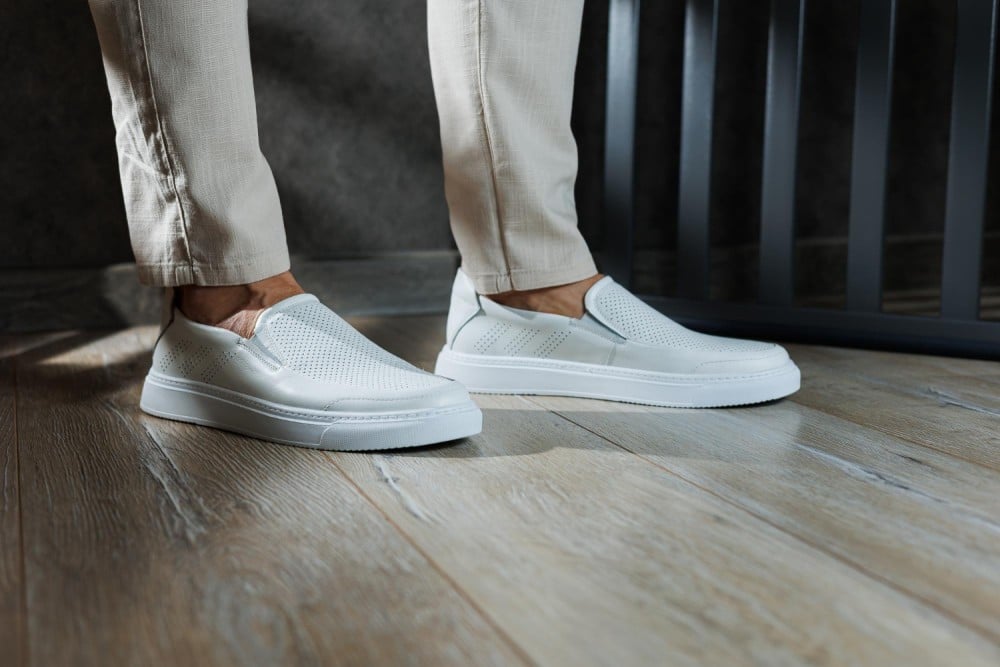

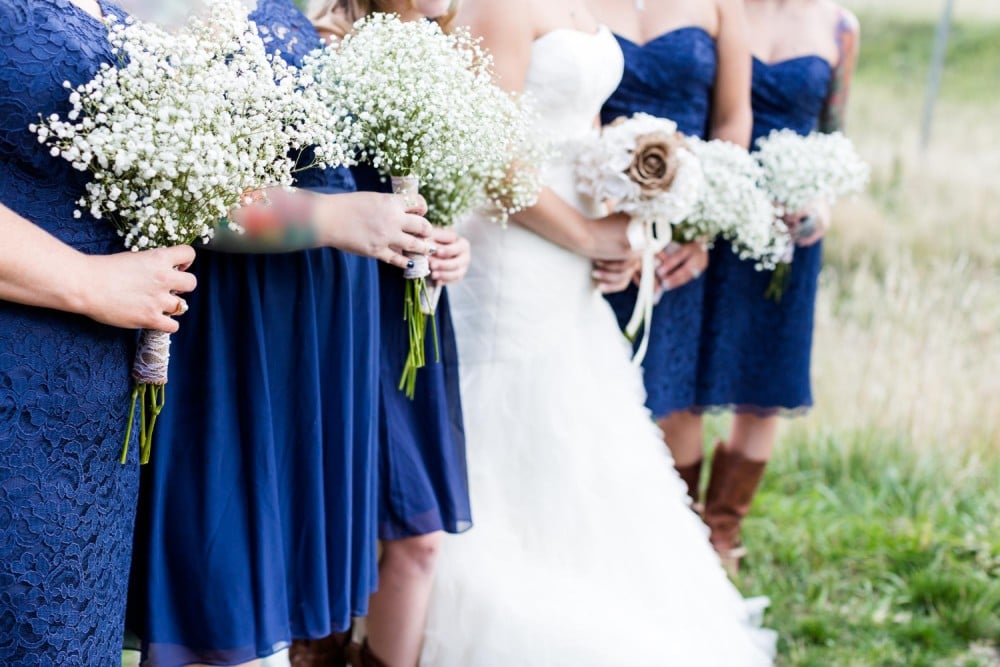
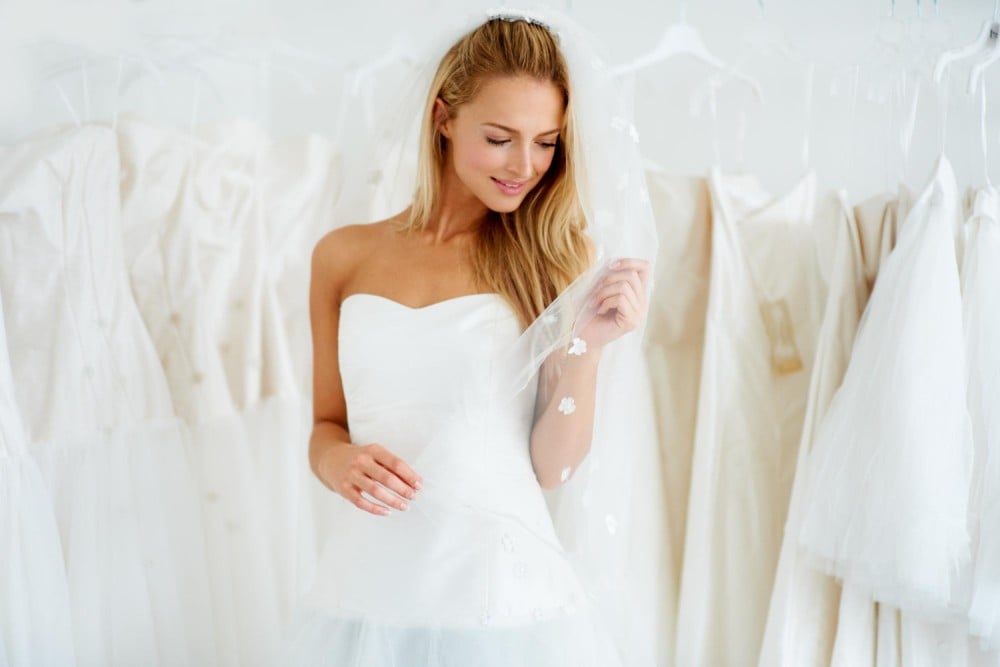

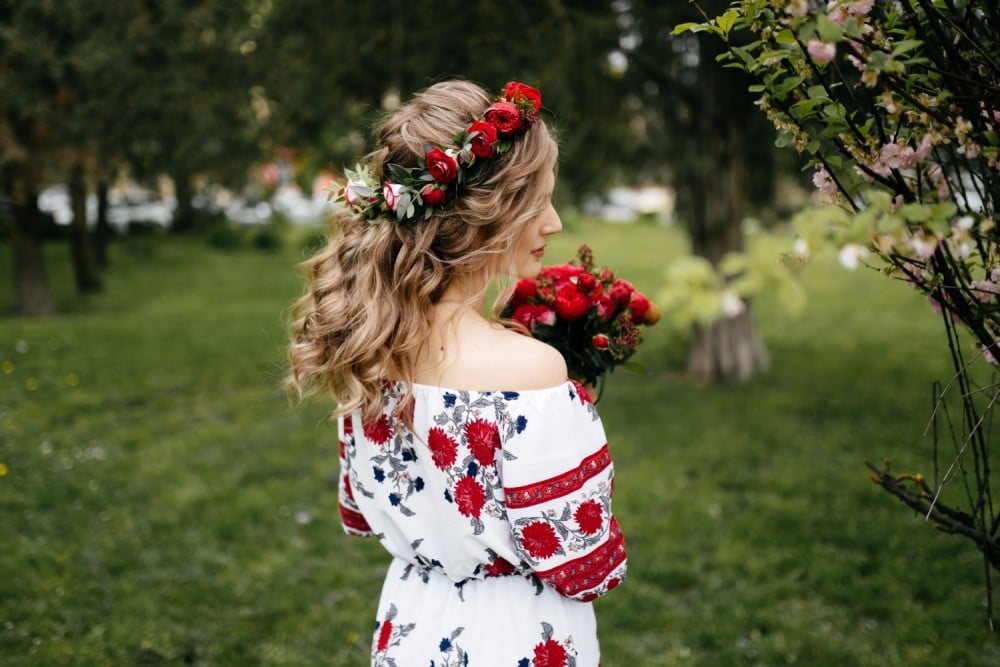
Top authors